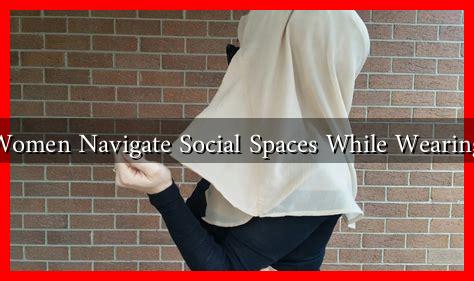-
Table of Contents
How Do Women Navigate Social Spaces While Wearing the Veil?
The veil, often associated with various cultural and religious practices, serves as a significant symbol for many women around the world. While it can represent modesty, identity, and faith, wearing the veil also presents unique challenges in social spaces. This article explores how women navigate these environments while wearing the veil, examining the social, cultural, and psychological dimensions of their experiences.
The Veil: A Symbol of Identity and Modesty
For many women, the veil is more than just a piece of clothing; it is a profound expression of their identity. The reasons for wearing the veil can vary widely, including:
- Religious Beliefs: For Muslim women, the veil is often a religious obligation, symbolizing their commitment to their faith.
- Cultural Heritage: In some cultures, the veil is a traditional garment that signifies cultural identity.
- Personal Choice: Many women choose to wear the veil as a form of self-expression and empowerment.
Understanding these motivations is crucial for appreciating the complexities of navigating social spaces while wearing the veil.
Challenges Faced in Social Spaces
Women who wear the veil often encounter various challenges in social settings, which can impact their interactions and experiences. Some of these challenges include:
- Prejudice and Stereotyping: Women in veils may face discrimination or negative assumptions about their beliefs and values.
- Social Isolation: In some communities, wearing a veil can lead to feelings of exclusion from mainstream social activities.
- Communication Barriers: The veil can sometimes hinder verbal and non-verbal communication, leading to misunderstandings.
These challenges can create a complex social landscape for women who wear the veil, influencing their ability to engage fully in various environments.
Strategies for Navigating Social Spaces
Despite the challenges, many women have developed effective strategies to navigate social spaces while wearing the veil. These strategies include:
- Building Support Networks: Women often seek out communities of like-minded individuals who share similar experiences, providing emotional and social support.
- Educating Others: Some women take the initiative to educate those around them about the significance of the veil, fostering understanding and acceptance.
- Adapting to Context: Women may choose different styles of veiling depending on the social context, balancing personal beliefs with social norms.
These strategies not only help women navigate social spaces but also empower them to assert their identities confidently.
Case Studies and Real-Life Examples
Several studies and real-life examples illustrate how women navigate social spaces while wearing the veil. For instance, a study conducted by the Pew Research Center found that:
- Approximately 62% of Muslim women in Western countries reported feeling comfortable in public spaces while wearing the veil.
- Women who actively engage in community activities, such as volunteering or participating in local events, often report more positive experiences.
Additionally, the experiences of women like Ibtihaj Muhammad, the first Muslim American woman to compete in the Olympics while wearing a hijab, highlight the potential for visibility and representation in various fields. Her journey has inspired many women to embrace their identities while navigating social spaces.
Conclusion
Navigating social spaces while wearing the veil is a multifaceted experience that encompasses challenges and strategies for empowerment. Women who wear the veil often face prejudice and social isolation, yet they also develop strong support networks and engage in educational efforts to foster understanding. By adapting to different contexts and asserting their identities, these women demonstrate resilience and strength. As society continues to evolve, it is essential to recognize and respect the diverse experiences of women who wear the veil, promoting inclusivity and understanding in all social spaces.
For further reading on the experiences of women in various cultural contexts, you can explore resources from organizations like Women’s Rights.

